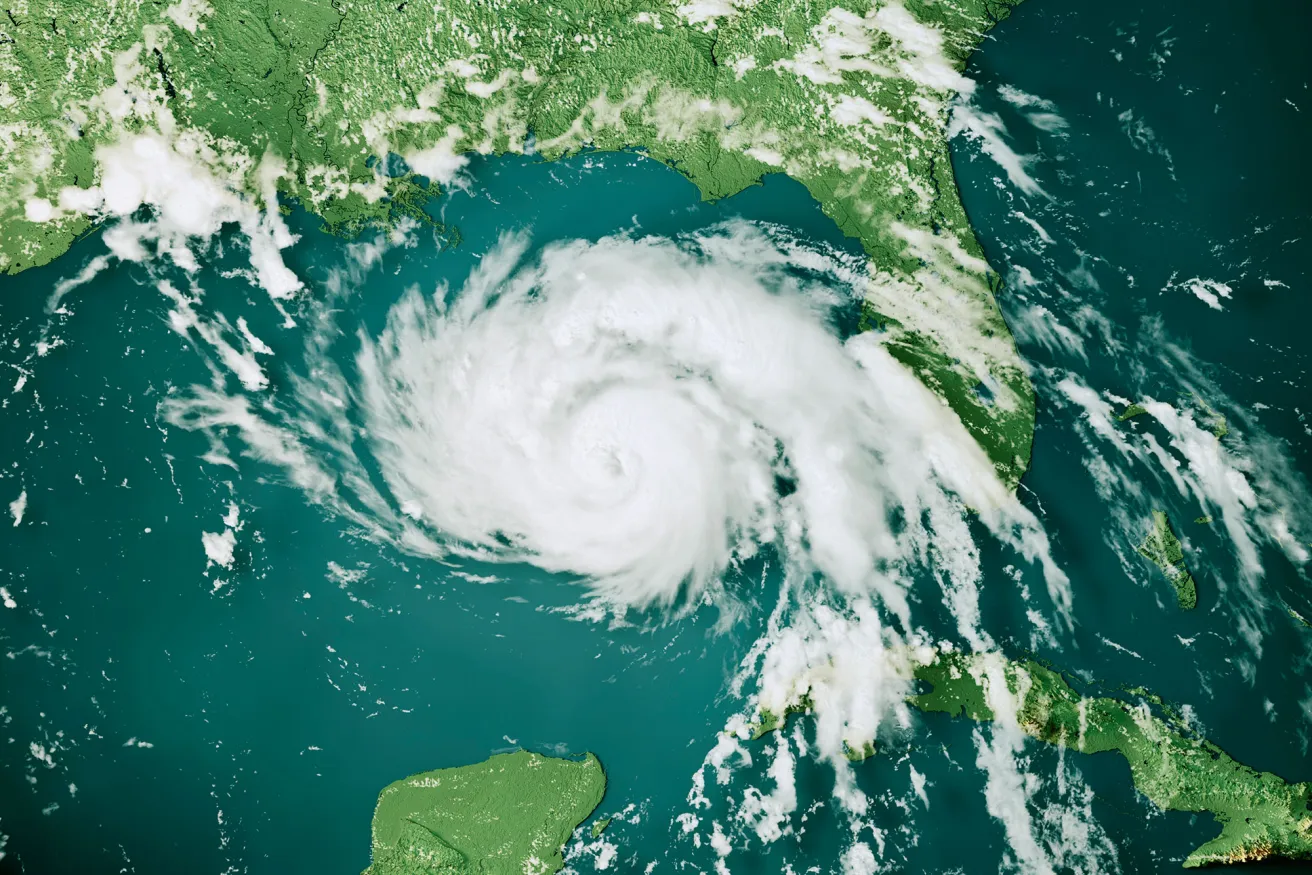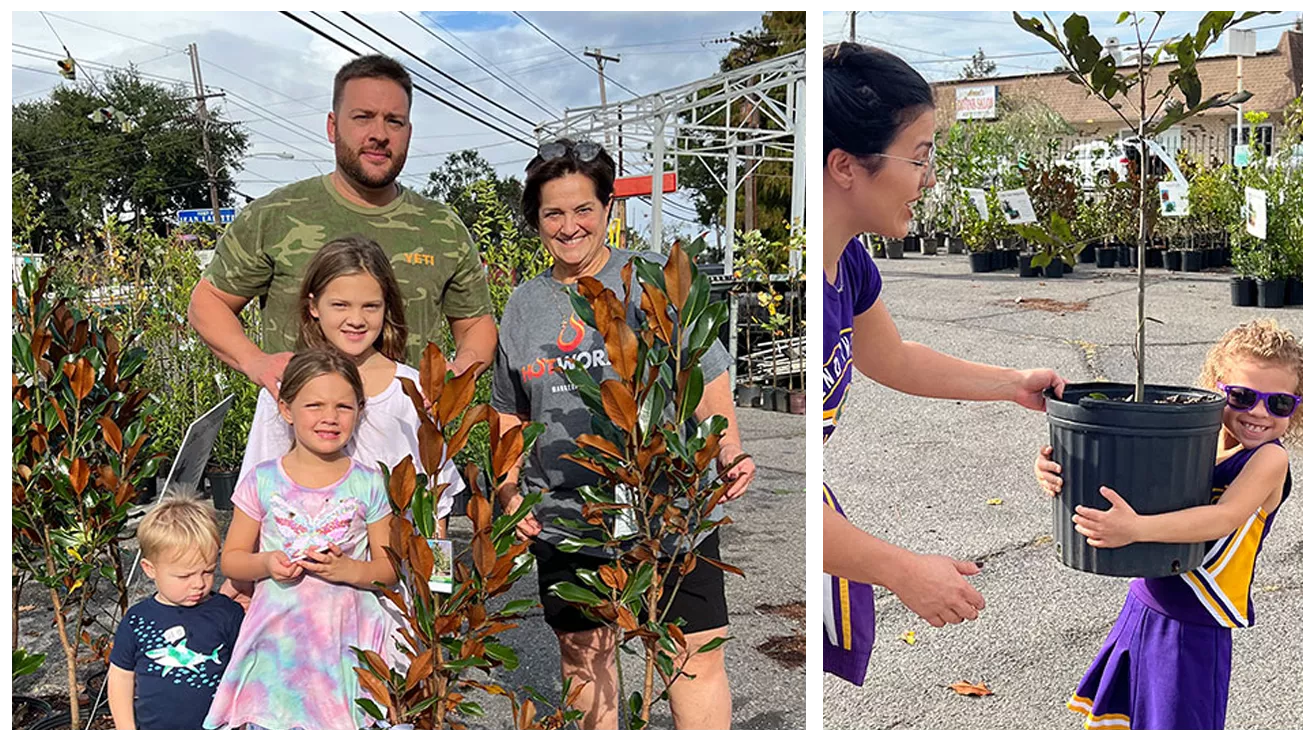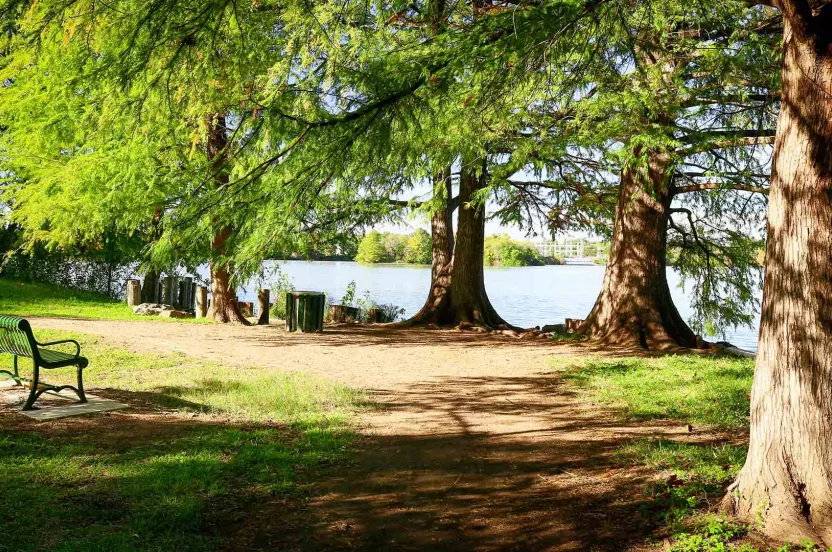Now live: The 2025 Canopy Report. Learn how Americans see trees. GET THE REPORT
Supercharged Hurricanes Are Our New Reality. How Can Trees Help?
Climate change is making storms longer and more intense. But there’s a nature-based solution to slow its effects — and heal communities.
August 9, 2023

Hurricane Ida rolled like a tank through Lafitte, Louisiana in August 2021. Its 150-mile winds were the first strike, followed by several feet of catastrophic saltwater flooding. In terms of worst storms to ever hit the state, Ida is surpassed only by Katrina.
The hurricane settled over Lafitte for 12 hours, destroying most homes in the area and taking out the community’s tree canopy.
Kathy Powajbo, a Lafitte resident, said the damage made her town unrecognizable. “Our community was devastated. It sort of looks like a war zone.”
Why does it feel like extreme storms like Ida are happening more often? It all comes back to climate change.
Hurricanes love heat
Much of climate change is happening in the ocean, where warming waters feed hurricanes extra heat that acts like jet fuel for storms.
Heat is energy that strengthens wind speeds, sets off larger storm surges, and allows hurricanes to intensify quickly before hitting land. Ida graduated from a Category 1 to Category 4 storm in only 24 hours. By the time it hit land, it had already reached its peak strength — at a speed that left many people unable to prepare.
Excess heat in the ocean worsens flooding, too. The process starts when warmer water gives off more water vapor. As a hurricane travels along the water, it picks up the extra moisture and drops it as rainfall on land. In Lafitte, some residents reported several feet of water on their property. The intensity of flooding lifted some homes from their foundations entirely. The day Ida hit, the ocean was 85 degrees, a few degrees hotter than average.
Over the past 150 years, the number of Atlantic hurricanes has remained about the same. But as climate change worsens, scientists say to expect stronger, longer-lasting storms.
Trees as a tool to slow climate change
Climate change is turning up the heat on extreme weather. But trees are the most efficient and affordable nature-based solution to slow it.
A major culprit of climate change and global warming is excess carbon dioxide. Trees pull carbon dioxide from the air, converting it into harmless compounds that feed the tree, releasing oxygen. Fun fact: As trees grow, half of their dry weight is from carbon absorption.
As the Foundation has said before, trees are not a silver bullet to climate change. Humanity must reduce its dependence on fossil fuels to make an impact on emissions. Even in this challenge, trees lend a helping hand (or branch?). Planted in the right place and managed properly, trees can lessen the need for heating and air conditioning, reducing even more emissions.
Trees act like umbrellas during storms, intercepting rainwater to potentially prevent flooding. By slowing the water down, trees buy time for evaporation to do its job and release some moisture back into the atmosphere — and gradually release more into the soil. Meanwhile, tree root systems bind the soil to prevent erosion. Roots also absorb quantities of water that would otherwise become damaging runoff.
Many public agencies, organizations, and private stakeholders are already finding value in trees as a solution to combat natural disasters and lessen the impact of extreme weather. Cities are more thoughtful than ever about how to plant trees, where to plant, and even what species to plant to best sustain and protect against these types of disasters while creating more resilient, healthy, and vibrant communities. In Puerto Rico, one group is using their recovery period to plant trees native to the island that are better able to withstand hurricane-force winds.

A year after Hurricane Ida, Lafitte families lined up for free trees to plant in their yards. Partner: Nola Tree Project
Replanting as recovery
After a hurricane, essential needs like food, water, and shelter come first. But when the flood waters recede and communities are ready to rebuild, the Foundation supports local planting organizations to rebuild the community’s canopy.
On top of the tragedy and destruction of major storms, their increasing frequency has also watered down public support as the news moves from one natural disaster to another. The Foundation’s Community Tree Recovery program makes sure communities are never forgotten, even if tree recovery planting happens for a decade after the storm.
These are long-term tree recovery efforts that may include a combination of multiple community tree distributions — when residents can take home trees to plant in their own yards — and community planting events sponsored by Foundation corporate partners.
Fifteen months after Hurricane Ida made landfall, Kathy Powajbo was one of 350 residents who lined up for free trees to help re-beautify the area and aid in future stormwater management. So what once felt like a “war zone” can start to feel more like home.
“These trees will definitely beautify our community,” she says, “But more importantly, the trees give us a sign of life, hope, and recovery.”



